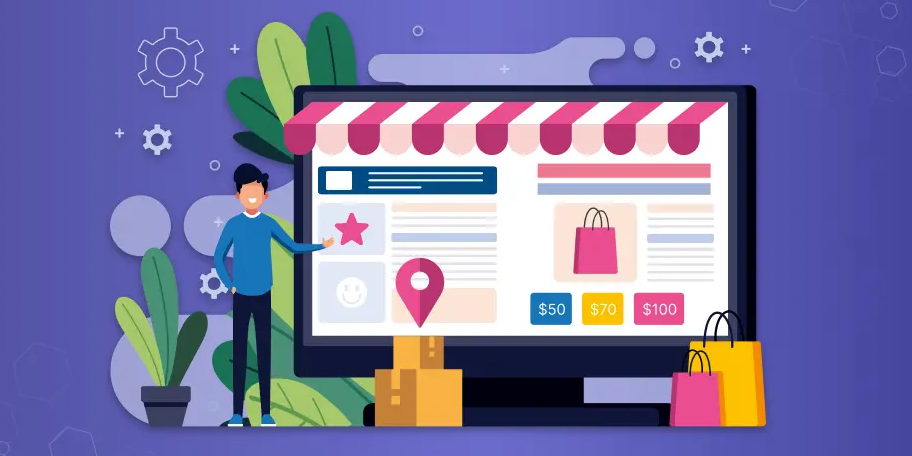Thanks to new technologies and innovative development methods, custom software is now more powerful, intelligent, and cost-effective than before. From AI to no-code tools, the way companies develop software is undergoing a major transformation.
Let’s explore the 6 key trends that are reshaping custom software development in 2025 — and why businesses should pay close attention.
1. AI-Powered Development and Automation
Artificial Intelligence (AI) is no longer just a buzzword — it’s deeply embedded in how custom software is being developed in 2025.
Today, AI tools assist developers in writing, debugging, and optimizing code faster than ever. Platforms like GitHub Copilot and other AI-driven IDEs (Integrated Development Environments) help programmers by predicting code, suggesting fixes, and even generating entire code blocks.
On the business side, AI helps automate workflows, predict user behavior, and personalize customer experiences in real time. AI also plays a big role in automating testing and quality assurance, reducing errors and saving time.
Why it matters:
AI shortens development cycles, reduces costs, and improves software quality — all while allowing businesses to create smarter, more adaptive apps.
Real-world example:
E-commerce businesses are using AI to build custom recommendation engines that show the right products to the right customers, increasing sales and engagement.
2. Rise of No-Code and Low-Code Platforms
Not every business has a dedicated development team. In 2025, no-code and low-code platforms are empowering non-developers (like marketers, entrepreneurs, and operations teams) to build their own apps using drag-and-drop tools.
These platforms reduce the need for writing traditional code, making it easier to build internal dashboards, automate workflows, or even launch customer-facing apps in a fraction of the time.
Tools like Bubble, OutSystems, and Microsoft Power Apps are leading the charge, and more companies are embracing these platforms for prototyping or MVP (Minimum Viable Product) creation.
Why it matters:
It democratizes software development, enabling faster innovation and reducing dependency on expensive tech teams.
Real-world example:
A logistics company used a low-code platform to build a custom inventory tracking system in just two weeks — something that would’ve taken months using traditional development.
3. Cloud-Native and Serverless Architecture
Custom software is increasingly being built for the cloud. In 2025, cloud-native and serverless models are replacing traditional monolithic applications. Instead of buying or renting physical servers, developers now use cloud platforms like AWS, Google Cloud, or Azure to deploy software.
Serverless architecture allows developers to run code without managing servers at all. This means businesses only pay for the computing time they actually use — saving money and simplifying scaling.
Why it matters:
Cloud-native software is more scalable, reliable, and cost-effective. It also allows for faster deployment and updates.
Real-world example:
A fintech startup developed a secure, serverless app for managing customer loans, which automatically scaled during peak hours without needing extra hardware.
4. Custom Software Gets Smarter with Embedded Analytics
Data is the backbone of modern business. In 2025, custom software is increasingly being built with real-time analytics and data visualization tools embedded directly into the user interface.
Instead of exporting data to third-party tools, users can get insights right where they work — whether it’s a sales dashboard, CRM system, or logistics app.
Embedded analytics allows companies to make faster, data-driven decisions, monitor KPIs, and track performance without switching apps or using spreadsheets.
Why it matters:
Integrated insights improve productivity, support better decisions, and help businesses react to trends or issues faster.
Real-world example:
A healthcare company built custom reporting dashboards into its patient management software, helping doctors and administrators track treatment progress and outcomes more effectively.
5. Cybersecurity and Privacy by Design
With cyber threats on the rise, especially in sectors like healthcare, fintech, and eCommerce, security is no longer an afterthought in software development. In 2025, the trend is shifting toward “security by design” meaning apps are built from the ground up with strong privacy and protection measures.
This includes features like multi-factor authentication (MFA), end-to-end encryption, secure APIs, and compliance with global data protection laws like GDPR or HIPAA.
Security testing tools and ethical hacking simulations (also known as penetration testing) are now integrated throughout the development lifecycle, not just at the end.
Why it matters:
Customers are more aware of how their data is used and stored. Prioritizing security builds trust and helps avoid costly breaches or legal issues.
Real-world example:
A telemedicine platform built in 2025 uses biometric login and encrypted video calls to protect patient privacy, complying fully with global medical data standards.
6. Personalized User Experiences with Modular Architecture
Custom software today isn’t just about doing a job — it’s about delivering a tailored experience to every user. In 2025, modular or microservices-based architecture allows developers to break software into smaller, independent pieces that can be customized, reused, or upgraded separately.
This approach makes it easier to personalize user interfaces (UI), workflows, and features based on the user’s role, preferences, or location, all without affecting the entire system.
This flexibility also makes it easier to integrate third-party tools or expand functionality as the business grows.
Why it matters:
User-centric design improves adoption, satisfaction, and retention. It also makes the software more adaptable to future needs.
Real-world example:
A B2B SaaS platform created modular features for sales, support, and HR teams — each user sees only the tools relevant to their role, streamlining workflows and improving productivity.
Final Thoughts
Custom software isn’t just a luxury anymore — it’s a competitive advantage. Whether you’re a startup launching a new product or an enterprise upgrading your systems, the trends above show that the custom software world is smarter, faster, and more secure than ever.
By embracing AI, no-code tools, cloud architecture, data-driven design, cybersecurity, and modular development, businesses can create custom solutions that are truly built for the future.

